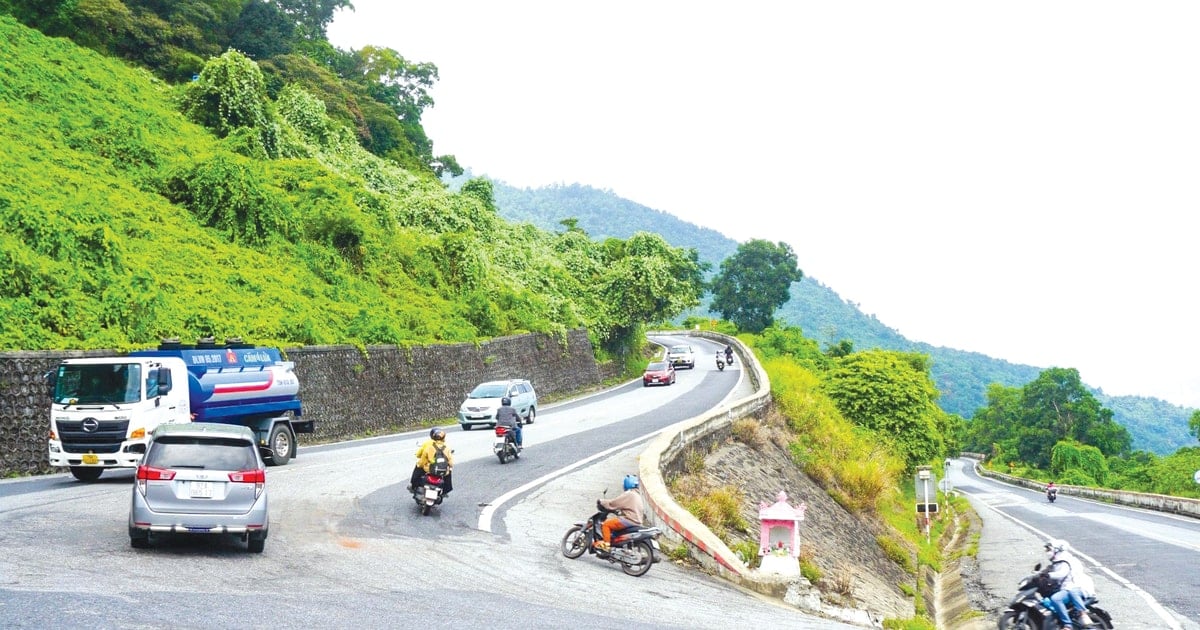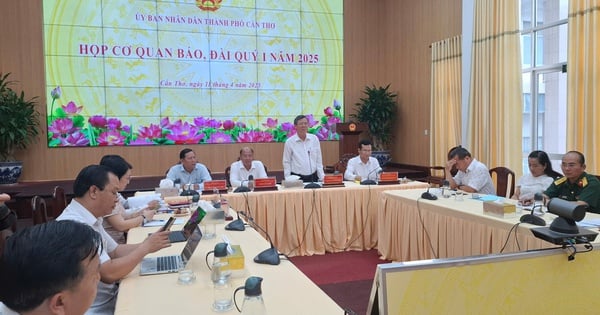Sharing with Thanh Nien on the morning of February 13, a leader of the Electricity Regulatory Authority (Ministry of Industry and Trade) said that the average electricity consumption from the 29th day of Tet (February 8) to the 2nd day of Tet (February 11) reached 488.2 million kWh, about 42 million kWh higher than the same period in 2023. The maximum capacity reached 29,656.9 MW, 1,800 - 2,700 MW higher than the same period in 2023.
However, the operation of the power system during the recent Lunar New Year can be briefly summarized as: proactive, secure, stable, and reliable.

Northern hydropower reservoirs are making thorough savings to ensure electricity supply for the 2024 dry season, avoiding a repeat of the power shortage.
During the 6th week (from February 5 to February 11), the load across the country decreased due to the Lunar New Year holiday. The average daily electricity consumption was 558.7 million kWh, about 213 million kWh lower than the previous week.
Since the beginning of the year, national load has increased by about 7.2% compared to the same period in 2023 (North increased by 11.4%, South increased by 7.7%, Central increased by 4.5%).
According to the Electricity Regulatory Authority, from December 28 (February 7), A0 has stopped the backup coal-fired thermal power plants to avoid excess power during the holidays. Of which, on the first day of the Lunar New Year (February 10), 25 coal-fired thermal power plants in the North and 7 coal-fired thermal power plants in the Central and South were maintained to limit excess power at low noon, ensure minimum configuration and save hydropower.
From the afternoon of the first day of Tet to the third day of Tet (February 12), coal-fired thermal power plants were restarted to meet the load and retain water in hydroelectric reservoirs with a total capacity of 4,088 MW, including units S1 Hai Phong, S1 Thai Binh, S2 Mao Khe, S8 Uong Bi, S2 Thang Long, S2 Mong Duong 1, S1 Vinh Tan 1, S5 Pha Lai 2, S1 Nghi Son 2, S2 Na Duong...
In addition, to increase redundancy and ensure system safety when abnormalities occur, from 0:00 on February 9 (29th of Tet) to 24:00 on February 12 (3rd of Tet), A0 adjusts the transmission limit on the regional interconnecting lines to reduce to 50% compared to normal working days, increasing to 70% during low-peak cycles at noon to increase the absorption of renewable energy and peak load cycles in the North to save hydropower.
Thoroughly save hydroelectric reservoirs in the North
The Electricity Regulatory Authority also said that currently, hydroelectric reservoirs in the Northern region have water flow lower than the average of many years from 48 - 98%, except for Hoa Binh, Thac Ba, and Tuyen Quang reservoirs.
In the Central region, hydroelectric reservoirs have good water inflow, most of which are approximately equal to or higher than the average of many years, except for some reservoirs with poor water inflow such as: Binh Dien, Vinh Son A/B, Song Ba Ha, Nam Kong 3, Ialy, Dak R'Tih, Dong Nai 3, Song Con 2A, which only reach about 11 - 80%.
In the South, hydroelectric reservoirs have water levels higher than the average of many years, except for Dai Ninh and Thac Mo reservoirs, which only reach 55 - 66%. Currently, no reservoirs in the system are releasing water for regulation.
According to calculations, the average electricity output by water is about 103.2 million kWh/day. The remaining output in the reservoir as of 0:00 on February 11 across the entire system reached 13,110 million kWh, 671.9 million kWh higher than the annual plan (the North is 662.1 million kWh higher, the Central is 67.2 million kWh higher, the South is 57.5 million kWh lower).
According to the Electricity Regulatory Authority, hydropower plants are operating according to the actual hydrological situation and the optimal regulation orientation in the February operation plan, meeting grid constraints, system needs, water levels and downstream water supply requirements according to the inter-reservoir process. However, the North is having to thoroughly save on hydropower reservoirs, especially those with low water levels.
In the Central and Southern regions, hydropower plants are being mobilized to the maximum possible capacity, optimally exploited according to the actual hydrological situation to ensure electricity supply.
Currently, A0 is flexibly and economically operating hydroelectric reservoirs in sync with solutions to change transmission grid connections to mobilize hydroelectric plants suitable for the effective water extraction capacity of irrigation works, while retaining water for power generation to ensure power supply during the hot season of 2024.
In addition, A0 regularly informs investors of coal-fired thermal power plants of monthly updated mobilization plans to proactively ensure coal fuel sources for electricity production.
Source link

































![[Photo] "Beauties" participate in the parade rehearsal at Bien Hoa airport](https://vstatic.vietnam.vn/vietnam/resource/IMAGE/2025/4/11/155502af3384431e918de0e2e585d13a)































































Comment (0)